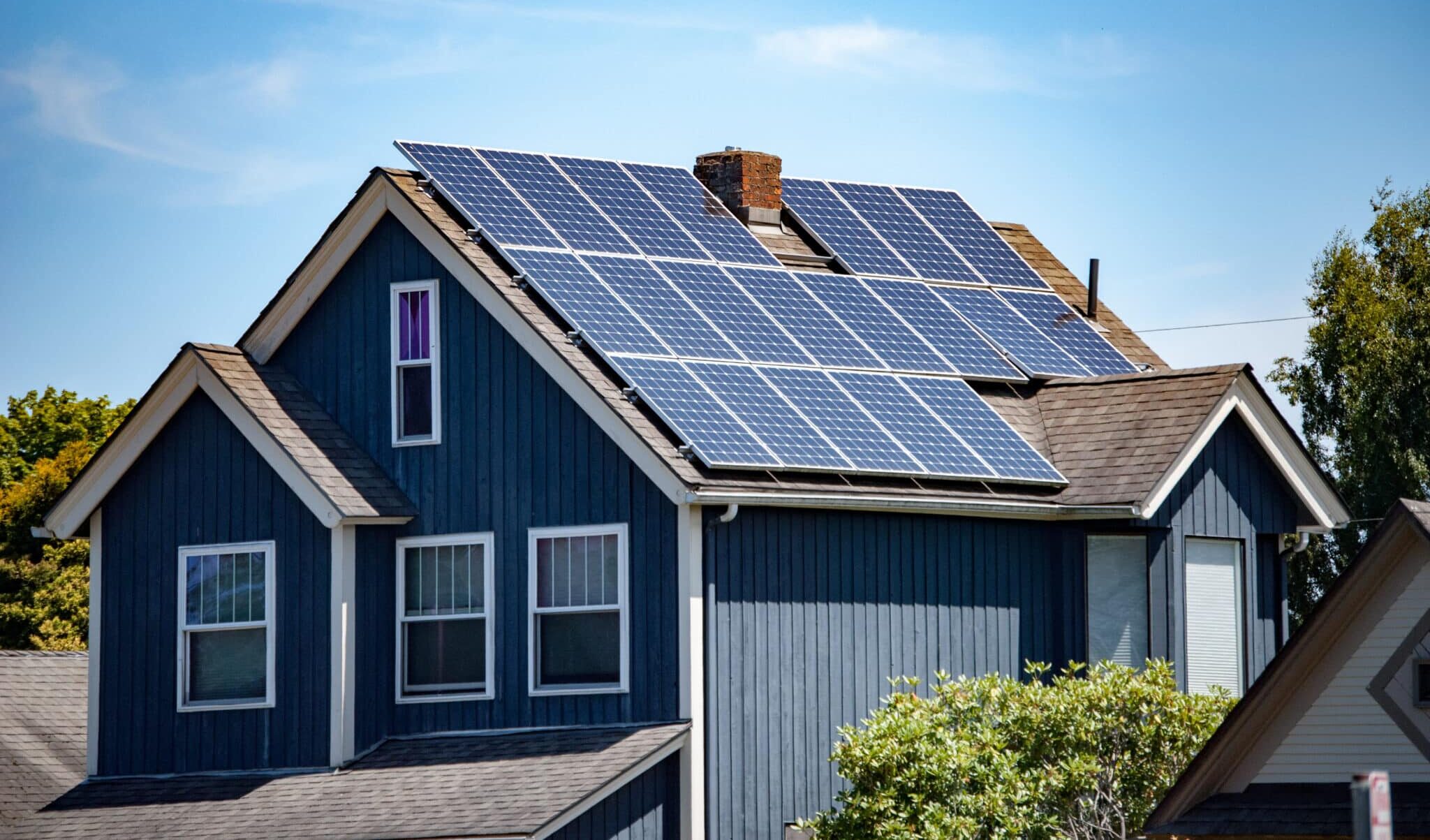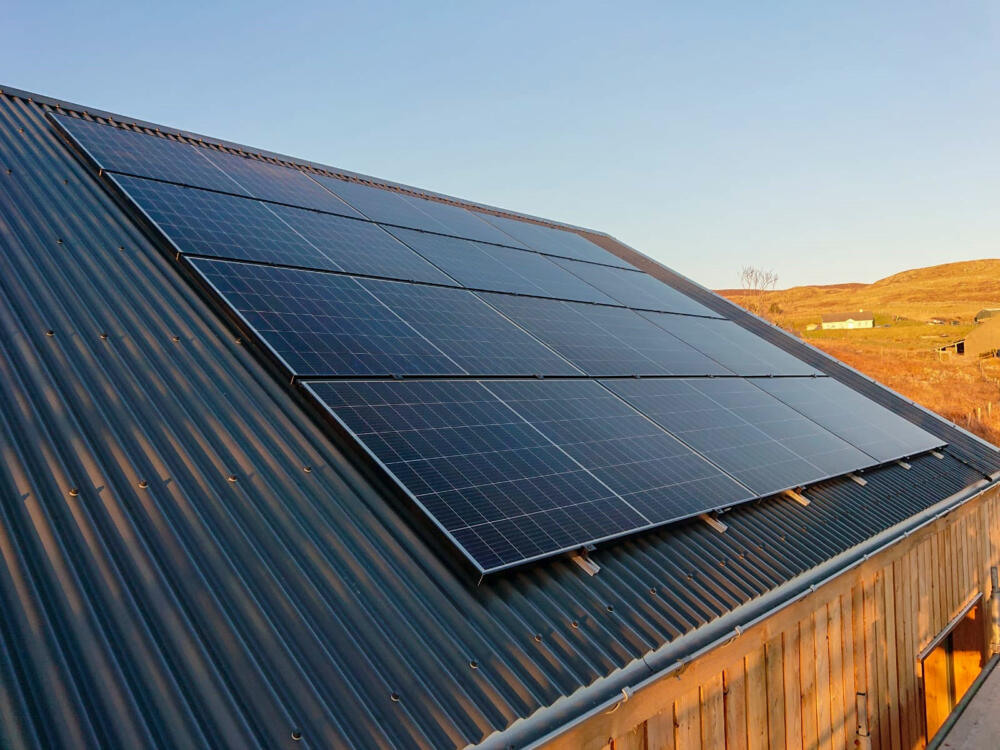Architectural Planning for Solar Integration
Installation of solar panels in new buildings requires careful planning and understanding of structural impacts. Solar panels not only play an important role in energy efficiency but also the aesthetics and the structural impacts of the building, such as the roof load. Proper consideration should be paid to the positioning of the panels for receiving maximum sunlight and the roof’s weight load. For instance, the addition of solar panels to the San Francisco Salesforce Tower was essential in yielding around 7.4%.
The correct choice of solar panels is crucial in order to harmonize them with the architectural style. Photovoltaic or PV panels and solar shingles differ in the aesthetic and functional impacts. PV panels are more popular and may be mounted on the existing roofs of the building. Solar shingles, included in the roof’s design. The research findings demonstrate that buildings using integrated solar solutions experience a 4.1% increase in overall market value.
Another major factor driving the installation of solar panels is the mandatory achievement of energy efficiency and sustainability goals. This should be harmonized with the overall energy requirements and the goals of the considered building. The Edge in Amsterdam, is a notable example of a new building that has achieved its sustainability and energy efficiency goals. It is fully equipped with several panels, covering most of its roof and south facade.
The solar technology experiences different technological advancement that increases the energy’s efficiency. In particular, bifacial panels are capable of capturing sunlight from two sides, delivering up to 11% more power than a traditional panel. Their delivery should be harmonized with the positioning of the sun in order to ensure the efficiency of the building’s orientation.
Central considerations also include the regulation of these solutions. Many regions and governments provide incentives for solar energy, which may reduce the cost of the installation. The tax break may be substantial compensation for the initial price of the installation. Local building codes and standard compliance is also necessary to ensure the overall efficiency and safety of the solution. Solar photovoltaic systems, are mandatory for new California residential buildings, as they reduce residents’ dependency on non-renewable energy and increase energy efficiency.
Current case studies and real-world cases may be important for the analysis. The Bullitt Center installation of 14,303 sf. solar array in Seattle that meets all its energy needs for its operation is a good case for consideration. Such results could be beneficial for Samsung’s stakeholders, and the cost-benefit analysis should be performed as part of the final findings.
The solar technology has a promising future in the analyzed industry. The various innovations facilitate the delivery of solar energy to buildings in a more efficient way. The introduction of transparent panels means that solar energy solutions can take place without depriving the building of the use of windows.

Leveraging BIPV Systems
The transition to renewable energy sources is revolutionizing the construction sector with the advent of Building Integrated Photovoltaic Systems . One of the major aspects of implementing BIPV systems is that they act as natural building envelope materials, which simultaneously produce power. For new facilities, they can fit easily and without disturbance to property in roofs, facades, or windows, replacing former materials . The retrofitting of the CIS Tower’s cladding in Manchester by installation of BIPV facilitated a reduction in the building’s annual carbon emission by 100 tons of carbon dioxide . It is critical to comprehend how the BIPV systems function and ways of ensuring their effectiveness.
Selection Criteria for BIPV Materials
The major characteristic in the selection of BIPV materials is their capacity to generate power with minimal visual consequences. An architect is required to source the most efficient panels to be used in a facility without affecting the internal workflow of its users. The BIPV works best if the color, transparency, and texture of the panels are chosen wisely. The inclusion of solar cells that are semi-transparent is preferred in areas with lack of naturally designed light, especially in the windows. The energy glass in the windows, curtain walls, and skylights should be implemented to enhance solar cells’ out-viewing without making the interiors look tacky .
Energy Performance and Cost Efficiency
The chief role of the BIPV system is to decentralize the power dependence of a facility from the traditional power suppliers. Achieving such effectiveness requires an approach to ensure that the net energy consumption of a wholly built structure is drastically cut. The most efficient buildings are net-positive, which generate more energy than they need to use. It is essential to calculate the energy ft2 and the payback of a facility to assess its effective, low financial costs, and genuine BIPV system performance.
Alternatives and Technological Innovations
A new era is here which defines much light, less-weight, and aesthetic solar or power generation brands like the organic photovoltaic cells. Ways of integrating BIPV systems Architecture solar technology involves orientation of the building, elevation, regional energy and climatic concerns, and additional use of power storage. Examples of real-life facilities with BIPV systems Kuggen is a building in Sweden that has rotating photovoltaic panels-always adjusting to the angle of the changing daylight to increase sunlight absorption.
Ensuring Scalability and Flexibility
Designing for Future Expansion
When integrating solar panels into new buildings, architects and engineers have to account for the future expansion of the said panels. The best way of doing it is by devising layouts that can be of modular shape. Developers should be ready to set additional panels and connect them with the existing one. What is more important, the increase of panels must not cause an additional disturbance. A national gallery building in Singapore provides a clue example of the adaptive photovoltaic system. Being attached to a historic building, these solar panels can be replaced or added being supported by the roof structure at the same time not causing any disturbance to the building.
Adapting to the new solar technology
Even if a given real estate object was designed with the use of the previous solar system, it should be possible to use the new technology as well. The practical implementation of this provision includes the creation of stations with universal attaching mean and accessible connections. In the Edge building in Amsterdam, the above practice was implemented. Simultaneously with the construction of the building, the developers provided the possibility to attach the new types of solar batteries. The decision of the creators of the Edge allowed the building to be one of the most ecological buildings in the world for eight years.
Integrating Smart Solar Management Systems
I believe one of the best ways to make the system both flexible, as well as scalable, is the use of the smart solar managing tool. Solar managing tools are based on the use of real-time energy and weather data that make it possible to manage solar energy distribution. The Bank of America Tower has a special solar panel that uses the managing tool to create more energy at the same time saving 20% more energy as compared to the non-managed demand.
Utilizing Smart and Connected Solar Systems
Integrating IoT in Solar Energy Management turns a conventional solar system into an intelligent network capable of optimizing its performance and functioning smoothly with a home automation system. One of the systems, the Google Nest platform, is used to connect with a solar system to adjust to energy use, considering the real-time output as well as a current state of the household, which can eventually increase efficiency by up to 15%. Real-Time Data Monitoring and Control is an essential feature of IoT-based solar systems. Parties involved, including homeowners and facility operators, can observe the production of electricity by the sun as well as its consumption by the house through a comprehensive dashboard.
The monitoring systems are timely in reporting the inefficient work of equipment or malfunction by sending reports to software or operators. An example of such a system can be found in the Masdar City project in the UAE, where the monitoring system is used to report the current data and predict energy output, which can be determined through available weather forecasting.
Advanced Predictive Maintenance is another beneficial feature of IoT-based management. Using AI, the needed maintenance can be predicted before minor malfunctions lead to emergency repair. As for Google, the system embedded in its solar farms can examine energy output indicating a potential malfunction as well as the need of a firm’s product. The acquisition of such solar system will, thus, save money and eliminate the risks of investing in a firm with a similar proposal. As for now, over 90% of the predictions of functioning or lack of thereof of the equipment is made by IBM-owned AI system used in solar panels.
IoT-based solar systems are essential for the Public sector and its constituents. The use of smart inverters, grid-connected solar systems automatically manipulate the energy flow to provide an upper hand for the grid system. An IoT connected pilot program is used by Duke Energy in North Carolina to do the same operation with solar system inverters to stabilize the network aforementioned plans’ peak loading.
Many private homeowners will benefit from the greater energy security provided by a solar system connected, spending an almost occasional power outage or poor grid service in a disaster in Florida with network-equipped solar systems and the use of Tesla Powerwall home batteries.

Incorporating Energy Storage from the Start
Assess the anticipated energy usage of the building
Designing and energy storage system that can effectively meet these needs will need to start by assessing the energy needs of the building on a daily and seasonal basis. This will allow architects to specify the correct size and type of battery system to implement. The Monticello Battery Storage Facility in Texas was developed to enable scalability. An 80-MWh battery capacity is installed in the facility, storing energy off the grid and powering between 8,000 and 10,000 homes. Oversizing is another potential solution for ensuring that the ESS will be able to effectively meet the energy demands of the building.
Choose the right type of battery technology
lithium-ion batteries are a popular choice due to their high energy density and long cycle life, making them a suitable choice for both residential and commercial storage. Homeowners have been able to leverage flow batteries, which can provide better scalability and longevity for the ESSs used in larger buildings. This requires that the different types of batteries be thoroughly compared in terms of discharge rates, efficiency, capacity, and cost. Comparisons can also be made in terms of the environmental impact of the batteries used. The varying sizes, costs, and electric requirements of the competing batteries can then be leveraged to scall an economically attractive solution.
Develop integration techniques for seamless functionality
Not only are the ESSs connected between its power plant and the batteries, but it is also connected o the solar panel as well as the host building’s EMS. The ESS and the solar power plant will be connected via substations and transmission lines. Integrate powerful software that is capable of managing the production and consumption of energy from members of the team. The software would use algorithms that dictate when to store or use the power, or sell it to the grid. An example would be the solar-plus-storage system that was integrated and installed in the Mandalay Bay Conventional Center in Las Vegas, which uses developed software to manage the energy consumption and production at the 4.9-Mel million-square-foot convention space.
Decide on important Regulatory and Safety Considerations
The implemented ESSs must be code-compliant. Different codes and regulations enforce where and how batteries may be installed. For example, the city of New York has established requirements for battery storage and building systems. Knowledge of electrical and fire safety codes is paramount to ensuring installations are properly integrated into buildings. The installation must be strategically places on the property in order to ensure that emergencies are rare.
Decide on the Economic Impact and ROI Analysis
Develop a model that is capable of coherently explaining the costs, trends, and benefits of an added ESS. Include costs of initial installation and total maintenance to yield total lifespan of the batteries. The system that has been implemented at Hornsdale Power Reserve in South Australia is predicted to add over $35 million in economic activity for the region. The move for implementing energy storage systems was simple due to the grid-wide benefits of the system. Daytime electricity prices have decreased since the implementation of the system at the reserve.
Aligning with Future Smart Grid Developments
Designing for Grid Interactivity
As modern grids evolve toward smarter energy management systems, grid interactivity becomes a crucial issue in architectural design. Architects and engineers should prepare designs to interact with the grid in multiple ways. A good example is the use of the Via Verde development in the Bronx. The development’s smart meters and solar panels interact dynamically with the local grid, making energy consumption more efficient and reducing the demand for peak loads.
Demand Response Systems
These systems allow the building to adjust its energy consumption to the needs of the grid. When the grid experiences peak hours, the time of most energy scarcity and highest prices, the demand response systems in the building are activated. The building can reduce energy consumption or tap into its electrical energy storage systems to use solar power at these times. The Silver Spring Civic Building’s demand response strategy enables it to save additional costs, ensuring that the HVAC and other energy-intensive systems run at their peak efficiency.
Advanced Metering Infrastructure
It provides real-time visibility for the utility company and loads. Use by The Edge in Amsterdam allows the building to be more efficient in its energy operation and help the broader smart grid community working on the project.
Preparing for Net Metering and Energy Trading
These features strengthen existing and future grid interactivity features that will be used as the building is integrated with the rest of the grid. The ZCB building in Hong Kong is an excellent example of net metering, which shows a significant return on investment from solar paneling.
Cybersecurity Measures
These features are included to prevent hackers from crippling systems or subverting energy supplies. A good example of this is the encrypted communication channels and secure authentication systems in the Salesforce Tower’s energy management system.





